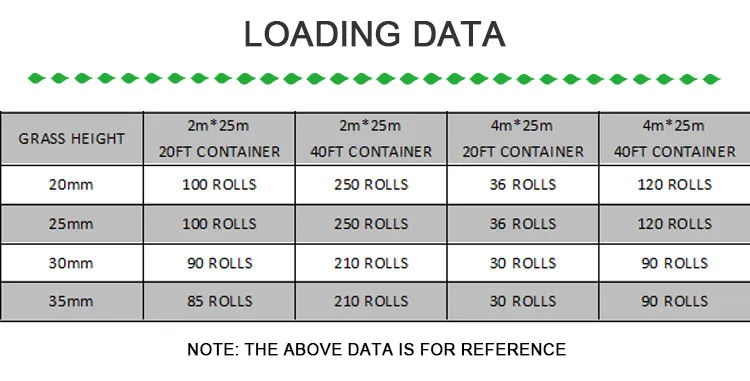
- Afrikaans
- Arabic
- Belarusian
- Bengali
- Czech
- Danish
- Dutch
- English
- Esperanto
- Estonian
- Finnish
- French
- German
- Greek
- Hindi
- Hungarian
- Icelandic
- Indonesian
- irish
- Italian
- Japanese
- kazakh
- Rwandese
- Korean
- Kyrgyz
- Lao
- Latin
- Latvian
- Malay
- Mongolian
- Myanmar
- Norwegian
- Persian
- Polish
- Portuguese
- Romanian
- Russian
- Serbian
- Spanish
- Swedish
- Tagalog
- Tajik
- Thai
- Turkish
- Turkmen
- Ukrainian
- Urdu
- Uighur
- Uzbek
- Vietnamese
Benefits of Synthetic Turf for Football Fields and Sports Performance
Nov . 07, 2024 08:50 Back to list
The Rise of Synthetic Grass Football Fields
In recent years, the world of sports has seen a significant transformation with the introduction and increasing popularity of synthetic grass football fields. These innovative surfaces offer numerous benefits, including enhanced durability, lower maintenance costs, and an all-weather playability, making them a preferred choice for amateur leagues, schools, and professional teams alike.
Durability and Consistency
One of the most significant advantages of synthetic grass is its durability. Unlike natural grass, which can become worn and damaged due to heavy foot traffic, adverse weather conditions, or lack of proper maintenance, synthetic surfaces can withstand high levels of activity without noticeable wear. This resilience ensures that football fields remain in optimal playing condition year-round, allowing teams to train and compete without interruptions. Furthermore, synthetic grass provides a consistent playing surface, reducing the risk of injuries caused by uneven or poorly maintained natural grass fields.
Cost-Effectiveness
While the initial installation cost of synthetic grass fields may be higher compared to natural grass, the long-term savings are substantial. Synthetic fields require minimal maintenance; there is no need for regular mowing, watering, or fertilizing, which can be significant expenses related to natural lawns. Additionally, synthetic fields do not suffer from issues such as mud puddles or bare patches that can result from heavy rains or overuse. Over time, the savings from reduced maintenance can offset the installation costs, making synthetic grass a financially sound investment for sports organizations and educational institutions.
Environmental Considerations
synthetic grass football fields

The environmental impact of synthetic grass football fields is a subject of ongoing debate. While it is true that these surfaces do not require water for irrigation, which conserves a vital resource, there are concerns regarding the materials used in their construction and the heat they can retain. However, advancements in technology have led to the development of more eco-friendly synthetic grass options. Many manufacturers now offer products made from recycled materials and have implemented systems to mitigate heat retention, making synthetic fields a more environmentally responsible choice.
All-Weather Playability
Another major benefit of synthetic grass is its ability to provide a playable surface in various weather conditions. Whether it’s rain, snow, or extreme heat, synthetic fields remain functional and safe for play. This characteristic is particularly advantageous for schools and recreational leagues, which often face scheduling difficulties due to inclement weather. With synthetic grass, teams can train and play matches even after heavy rain, as these surfaces drain water efficiently, reducing downtime.
Player Performance and Safety
Player safety is of paramount importance in sports, and synthetic grass has made strides in this area as well. Modern synthetic fields are designed to provide better shock absorption than traditional turf, reducing the risk of player injuries, such as sprains and concussions. Additionally, the even surface of synthetic grass minimizes the likelihood of ankle twists, a common injury during football games. Moreover, with the option of integrating infill systems that mimic the feel of natural grass, player comfort and performance on synthetic fields can closely match that of playing on traditional turf.
Conclusion
The growing trend towards synthetic grass football fields signifies a pivotal shift in the sporting world. With their durability, cost-effectiveness, all-weather performance, and safety features, synthetic fields are rapidly becoming the go-to solution for football programs at all levels. As technology continues to improve, we can expect further advancements in synthetic grass, making it an even more attractive option for future generations of athletes. The evolution of football fields reflects not only the changing landscape of sports infrastructure but also a broader commitment to enhancing the sports experience for players and fans alike.
-
The Benefits of Artificial Turf for Indoors
NewsJul.15,2025
-
How Artificial Grass Suppliers Ensure Quality Products
NewsJul.15,2025
-
Artificial Grass and Pets: A Space for Relaxation
NewsJul.08,2025
-
Balcony & Outdoor Decoration with Artificial Grass
NewsJul.08,2025
-
Best Indoor Artificial Grass for Home
NewsJul.07,2025
-
Best Pet Turf for Dogs: Safe & Durable Artificial Grass Options
NewsJul.07,2025
Products categories









